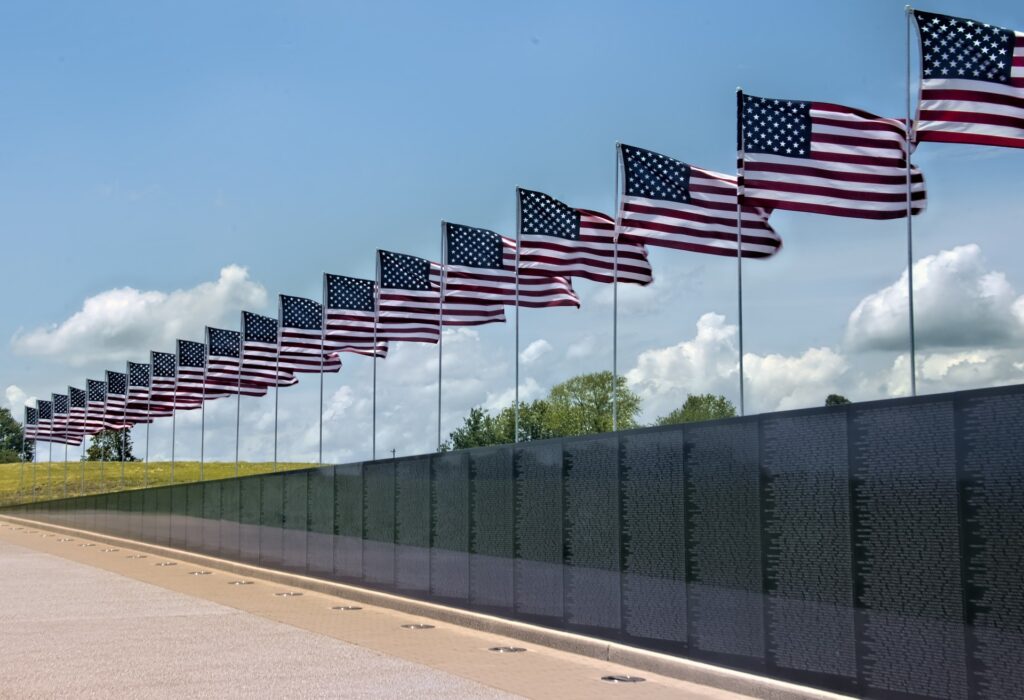The Veterans Memorial in Washington, D.C., commonly known as the Vietnam Veterans Memorial, is a tribute to the men and women who served and sacrificed their lives during the Vietnam War. Here’s a brief history of the memorial:
- Origin and Design:
The idea for a memorial to honor Vietnam War veterans emerged in 1979, when a group of Vietnam veterans formed the Vietnam Veterans Memorial Fund (VVMF). They launched a design competition, inviting architects to submit their proposals for the memorial. The winning design was created by Maya Lin, a 21-year-old architecture student at Yale University. - Controversy and Public Reaction:
Maya Lin’s design initially sparked controversy and received mixed reactions. The design featured a V-shaped, black granite wall sunken into the ground, inscribed with the names of over 58,000 soldiers who died or went missing in action during the war. Some criticized the design for its simplicity and lack of traditional heroic symbolism. - Construction and Dedication:
Despite the controversy, construction of the memorial began in 1982. The memorial site is located on the National Mall near the Lincoln Memorial. The black granite panels were engraved with the names of the fallen soldiers, listed in chronological order of their deaths or disappearances. The memorial was dedicated on November 13, 1982, and officially opened to the public the following day. - Expansion and Additions:
Over the years, several additions were made to the memorial site to provide a more comprehensive tribute to the veterans. In 1984, the Three Servicemen Statue, sculpted by Frederick Hart, was unveiled near the memorial. It depicts three soldiers, representing the diverse backgrounds and experiences of those who served in Vietnam. - The Vietnam Women’s Memorial:
In 1993, the Vietnam Women’s Memorial was added to the site. This memorial recognizes the contributions and sacrifices of the women who served during the war as nurses, aid workers, and in other roles. The sculpture, created by Glenna Goodacre, depicts three female nurses assisting a wounded soldier. - Reflection and Healing:
The Vietnam Veterans Memorial has become a powerful symbol of reflection and healing. Visitors often leave tokens of remembrance, such as flowers, letters, and photographs, at the wall. The reflective nature of the black granite surface allows visitors to see their own reflections among the names, creating a personal connection with the memorial.
The Vietnam Veterans Memorial stands as a somber and poignant tribute to the veterans of the Vietnam War, and it continues to be a significant landmark in Washington, D.C., drawing millions of visitors each year to pay their respects.

